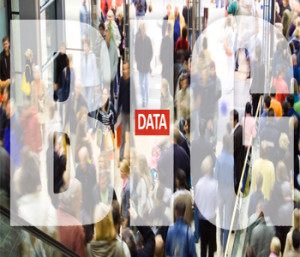 A STIMULATING DISCUSSION in RetailWire.com this morning led me to once again think deeply about how retailers are confronting so-called Big Data and applying it to their businesses.
A STIMULATING DISCUSSION in RetailWire.com this morning led me to once again think deeply about how retailers are confronting so-called Big Data and applying it to their businesses.
The question posed was an intriguing one, given the continuing hype and mysticism ascribed to Big Data over the past several years.
What is your take on the advancements (or not) retailers are making in the use of data capture and analysis? Is it all leading to significantly improved customer experiences down the road, or something less?
The responses mostly seemed to accept two tacit assumptions: One, that all store data is Big Data. Two, that the primary goal of Big Data analytics is the creation of targeted promotional offers. I have a little problem with that.
When did retail POS data suddenly become Big Data? We’ve been collecting it (and mostly discarding it) for decades. Now that storage costs have finally declined, we can capture and hold it long enough to run a few queries and design a few models. Shopper in-store data really hasn’t changed much, but our ability to mine its potential has certainly advanced.
Certainly data flows from the POS and frequent shopper programs continue to expand. There are even some new sources, like in-store shopper tracking, entering the mix. Yes there’s lots of data. But is this really Big Data?
Mining the Flows
This leads to an earnest discussion about segmentation and targeting – primarily for promotional offers. Inevitably for retailers that turns the lens toward how they can attract manufacturer trade and shopper marketing dollars. Retailers want to mine those flows for profit opportunities. Rarely do we hear about applying shopper insights toward a better total customer experience.
Given my past Tirade about “The Incredible Dissolving Store” and other comments, I make no bones about my point of view on these matters. Big Data is qualitatively different, because of its variety and ever-increasing velocity. In retail, Big Data is much more about how shoppers behave outside the building – their broadcast, online and social media activities and their personal consumption experiences.
Here’s my take on RetailWire:
If retailers truly want to extract value from Big Data they had best begin by abandoning everything they think they know about data accumulation, analysis and activation. The shopper data generated within the confines of the store are certainly very large, but the shopper data generated outside the store are far greater in magnitude and significance.
It’s time to stop contemplating our (data) navels folks. We need to lift our heads and start gazing into the (data) clouds, if we want true insights into the Big Picture.
Big Data is certainly about volume and variety, but most importantly it is about velocity. To cope with ever-increasing speed, we’ll need to stop attempting to measure the molecules in the data flow and start monitoring its temperature. In this context it is very often not the data itself that yields the insights, but the data about the data.
All metaphors aside, I am at my core, a stores guy. I believe strongly that retailers must learn to offer relevant experiences and solutions to shoppers. Sensing their in-store behavior is a place to begin segmentation and targeting. But to what end?
If the retailer’s goal is simply to extract more shopper marketing funds from its suppliers with claims of robotic relevance, I submit that this is ultimately a soul-less and bankrupt strategy.
If the goal is to continually adjust stores, communications, shopper experiences and offers to match shoppers present and anticipated needs, that may well be the golden path to Big Data nirvana.
© Copyright 2015 James Tenser

If the goal is to continually adjust stores, communications, shopper experiences and offers to match shoppers present and anticipated needs, that may well be the golden path to Big Data nirvana.